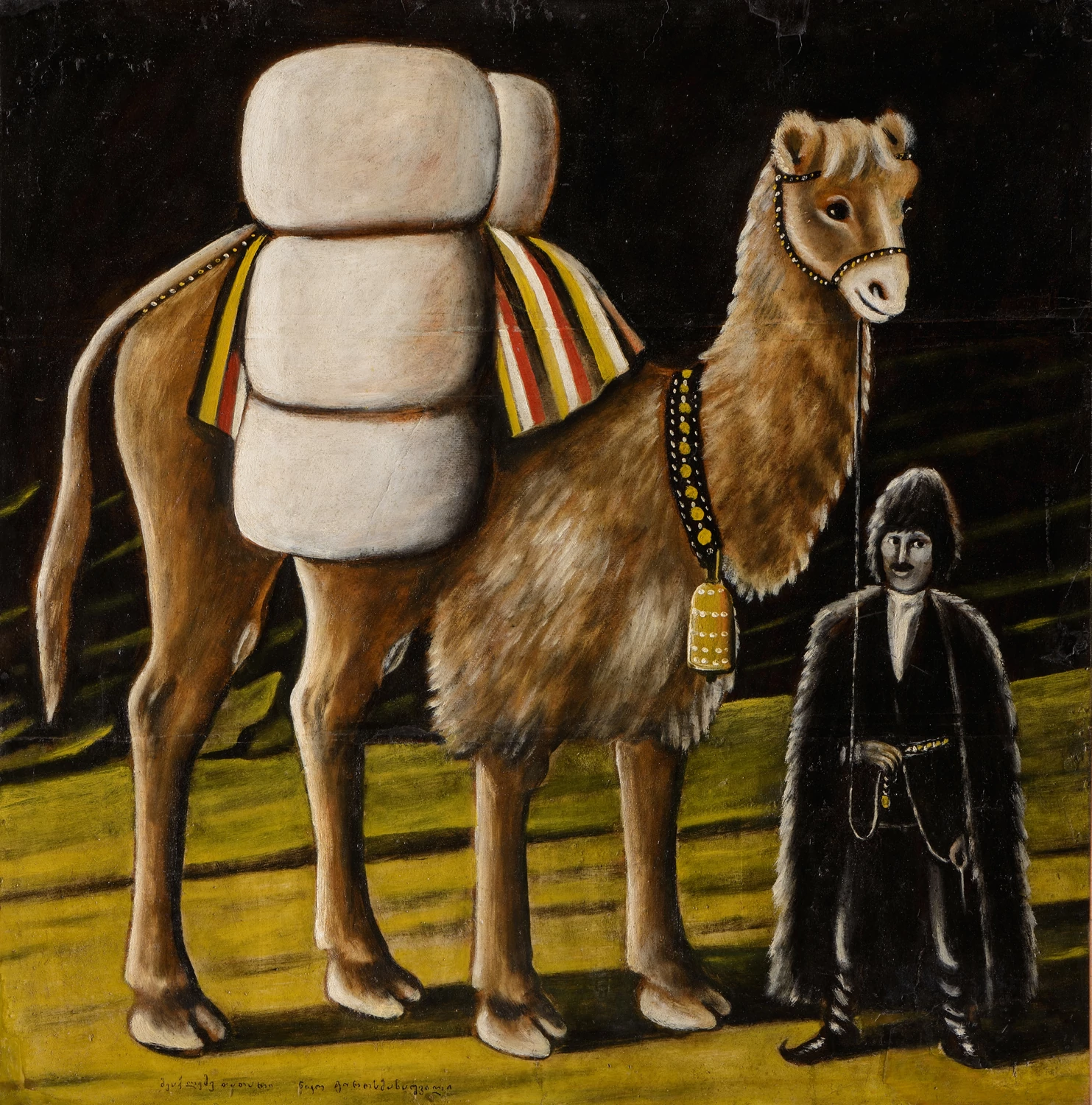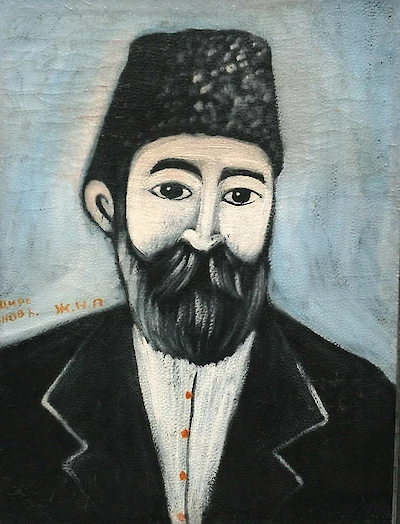Niko Pirosmani
Will paint for food




“Society should find out where Niko Pirosmani is, whether he is alive, or in need of help.” This haunting note is from the first meeting of the Society of Georgian Painters, called together in March of 1916. Niko was alive, but homeless, drifting between the dukhan taverns of Tbilisi, exchanging paintings for hot meals, and sleeping in abandoned buildings.
Niko’s father Aslan Pirosmanashvili died when Niko was two years old, and the family’s comfortable life on a vineyard near the small village of Mirzaani was shattered. A few years later, his sister Mariam sent her husband to retrieve Niko, bringing him to live with her in Tbilisi, the capital city of Georgia. A cholera outbreak soon claimed Mariam, and her grieving husband sent Niko to live and work for the middle class Kalantarov family, who provided him the opportunity to learn to read and write both Russian and Georgian, and encouraged his training as a typesetter.
At 14, Niko returned to Mirzaani to work as a herdsman. On his own, Niko’s life became a precarious dance on the edge of poverty. He jumped through a series of odd-jobs and half-careers. He painted houses, painted sign boards for shop owners, and worked in an amusement park in Tbilisi. In 1882, at age 20, Niko partnered with fellow self-taught painter George Zaziashvili to start a signboard painting company. He later worked as cook for the Transcaucasian Railway, and after that co-founded a dairy farm that found enough success to allow him to build a house for his sister in Mirzaani.
Through all this, Niko slowly taught himself to paint, preferring to work on black waxed cloth, painting animals, forest scenes and the markets and tradesmen he worked alongside. When Niko backed out of the dairy farm project and began drinking, painting became a form of barter, with simple portraits traded for hot tavern meals.
These tavern paintings were discovered by the Russian painter Mikhail Le Dentu and the Georgian writer Ilia Zhdanevich in 1913, who brought Niko’s work back to their friends and Natalia Goncharova in Moscow. For the first time, Niko Pirosmani’s tavern artwork was displayed in a formal exhibition. The show, Мишень, Target, was hosted by Larionov, and placed Niko’s work alongside luminaries of the avant-garde like Kazimir Malevich and Marc Chagall, and was a pivotal moment in the development of Russian Neo-Primitivism.
But recognition came too late for Niko. The transient painter responded to the call by the Society of Georgian Artists, who commissioned the artwork Utsindeli Sakartvelos Kortsili—but soon after their meeting a mocking editorial cartoon in a local newspaper appeared and Niko once again disappeared into the dukhan taverns. On March 30, 1918, the night before Easter Sunday, Nico was discovered unconscious in the basement of an abandoned house. He was taken to a hospital, but died soon after of malnutrition and liver failure.
As so often happens, Niko’s work only truly found recognition after his death, inspiring an etching by Picasso and a biographical film in 1969. In 2002 Niko’s face was emblazoned on the Georgian 1 Lari bill. Around 200 of his artworks are known, many living in the Art Museum of Georgia and the Georgian Museum of Fine Art. I'd bet that a few of his serene animals and idealized portraits are still be tucked away in the dukhans of Tbilisi.
...
Got questions, comments or corrections about Niko Pirosmani? Join the conversation in our Discord, and if you enjoy content like this, consider becoming a member for exclusive essays, downloadables, and discounts in the Obelisk Store.